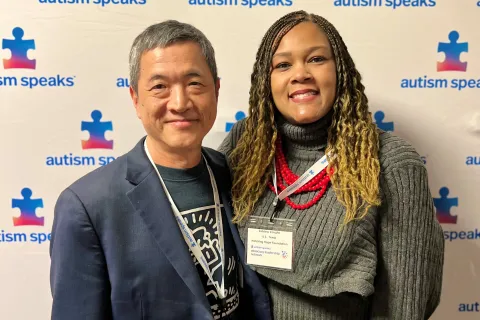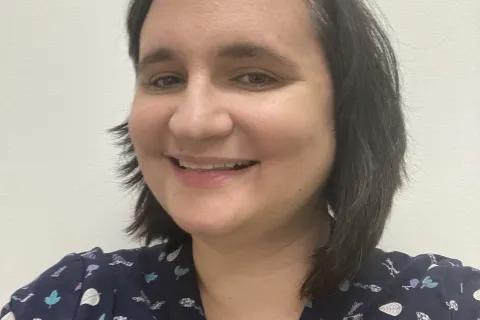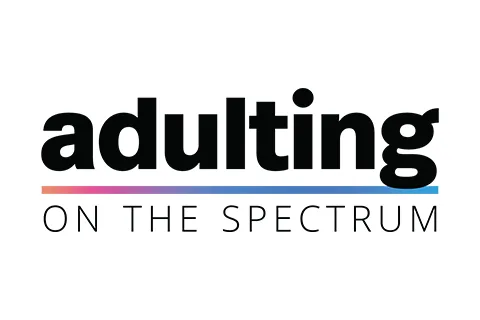The Job Interview
Employment Tool Kit
This is an excerpt from the Autism Speaks Employment Tool Kit. JobTIPS provides an excellent step-by-step guide to help you prepare for your job interview. The following is an abbreviated version.
A job interview is usually a face-to-face meeting between you and a manager or supervisor from the company you’d like to work for. It is very important because the employer will base much of their decision of whether or not to hire you on the interview. The interviewer will ask you a number of questions about your educational and work experiences, your personality, your strengths and weaknesses, your skills, and why you want the job. You will also have the opportunity to ask a few questions about the company and the job position. The interview normally takes place in the manager’s office, but some interviews are also done over the phone or even during a meal at a restaurant. Sometimes there is more than one interviewer, and sometimes there may be other job applicants interviewing with you at the same time (group interview). This meeting can last between 15 minutes and one hour – it all depends on the company and the position you are applying for.
Before the Interview:
- Make sure your resume is up-to-date and print out two clean copies with no wrinkles.
- Print a copy of at least two of your references listed with all of their contact information.
- Prepare a list of important information (your phone number, address, social security #, etc.) to help you fill out the job application, if needed.
- Make sure you have a form of photo identification (like a driver’s license) or state issued I.D.
- Review the job description or the “Help Wanted” description.
- Research information about the company including their “mission” or goal – read over their website or Google them!
- Practice your interview with someone you trust. Rehearse your responses out loud. It is important to rehearse what you will say and how you will say it – including practicing your tone of voice, eye contact, and facial expressions. Your responses should be more than one sentence long, if possible. — For a list of 10 standard interview questions with some tips for what to say and what not to say, visit JobTIPS here.
- Make a list of 2-3 questions you may have about the position.
- Put all of your materials in a professional-looking folder, briefcase, day planner, or handbag.
- Have a clean, professional outfit ready to wear (see below).
Day of the Interview:
- Dress for Success! — No matter what kind of job you hope to get, it is very important to look neat, clean, and professional. That means clean, wrinkle-free (ironed) clothes that fit appropriately, and matching belt, shoes and socks.
- If your interview is formal (for an office job or in a professional field), then you need to dress formally:
- For men: wear a suit and tie. Your suit should be black, gray, or navy. If you do not own a suit, you should wear nice slacks, a sport coat, and a dress shirt and tie.
- For women: wear a pants or skirt suit with a professional shirt underneath. If you do not own a suit, you should wear nice pants or a skirt, and a professional looking shirt. —
- If your interview is less formal (for a manual labor or retail position), or if you are an adolescent (younger than 18), you are not expected to wear a suit. But it is still better to be over-dressed than under-dressed. Try this:
- For men: wear nice slacks (not jeans, sweatpants, or shorts), a long-sleeve shirt with a collar that is tucked-in, and matching belt, shoes, and socks.
- For women: wear a skirt or nice slacks and a blouse (not sleeve less or low-cut), and flat shoes or shoes with a low heel.
- If you do not have appropriate job interview clothing and need financial assistance, the following non-profit organizations can help. You can also search the web for other groups in your area:
- For men: CareerGear
- For women: Dress For Success
- If your interview is formal (for an office job or in a professional field), then you need to dress formally:
- Grooming Tips: Be sure that you are showered/bathed, your teeth are brushed, hair is neat and combed, fingernails are neatly trimmed, you have put on deodorant, and for men, that you have shaved on the day of the interview.
- Plan to arrive at the interview location at least 15-30 minutes early. This will make a good first impression and ensures that you are not late. You can wait outside or in the waiting area if you are too early.
- Be polite and friendly to any staff you come into contact with. You might need to tell an employee that you are there for an interview so that your interviewer knows you have arrived. You could say, “Hello, my name is _____ and I am here to see (interviewer’s name) for an interview.”
- Be ready to begin with a greeting, a smile and a handshake. Reach out your hand and smile when you first enter the office, looking the interviewer in the eyes as you introduce yourself. You could say, “Hi, my name is _____. Thank you for seeing me.”
- Your handshake should be firm – not too hard, but not limp. Practice this with a friend before the interview. — Handshakes should last only 2-3 seconds, then let go. — Reaching out your hand to initiate a handshake shows that you are friendly and confident. You do not have to initiate a handshake if you don’t want to or if it makes you too uncomfortable. But if the interviewer reaches out his or her hand to you, you must reach out and shake.
- Wait for the interviewer to sit down first, then you can take your seat (unless he/she insists that you sit down first). Once he/she sits down, you should sit down too.
- Make occasional eye contact for at least 5 seconds throughout the interview. — If direct eye contact makes you uncomfortable, then try looking at the interviewer’s face or mouth periodically.
- Be sure to smile occasionally.
- Sit up straight in your chair and face the interviewer.
- Try your best to sit still as you talk.
- Use an upbeat tone of voice as you talk, if you can.
- Answer each question politely, even though the information may already be in your resume or application.
- It’s okay if the interviewer interrupts you to ask more about something you have just said. You need to answer the questions they ask, when they ask them. Be sure that you do not criticize the interviewer, even if they interrupt you.
- It is not appropriate for you to end the interview – that would seem rude. Usually, you need to wait until the interviewer indicates to you that the interview is ending.
- Always say “Thank you” when the interview is over. You should also express interest in the job by saying something like, “This seems like a really great place to work. I look forward to hearing from you.”
- Once again, smile and make eye contact as you shake hands.
After the Interview:
Within two days after your interview, you should always write a thank you letter or email to your interviewer for meeting with you. Click here for some suggestions and a sample letter from JobTIPS.
Now is time for you to wait. You must wait to hear whether or not you got the job. This can be hard! You should not contact the employer more than once about the job. JobTIPS provides some helpful guidance about whether or not to contact your potential employer.







